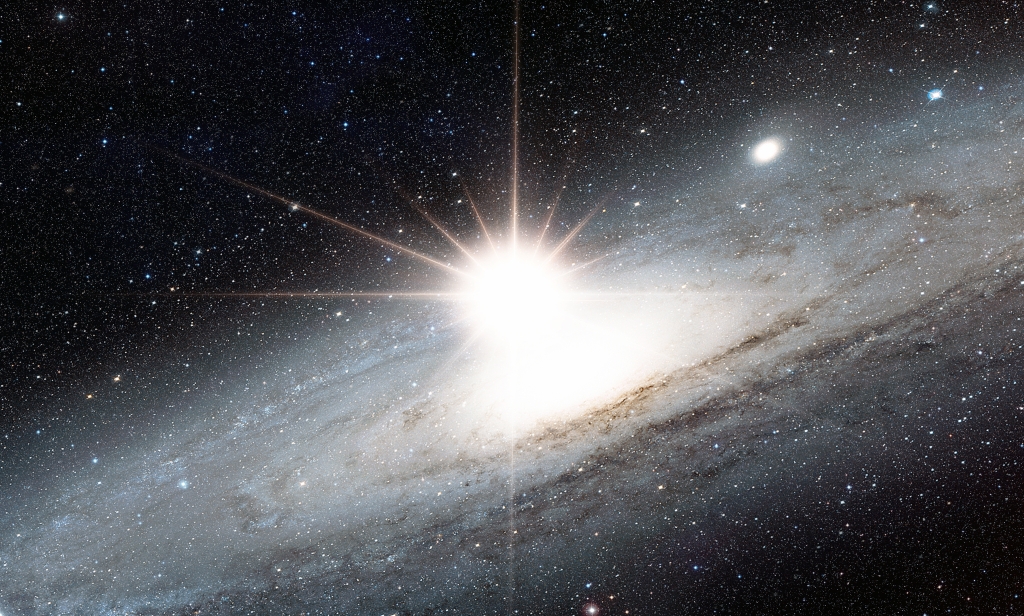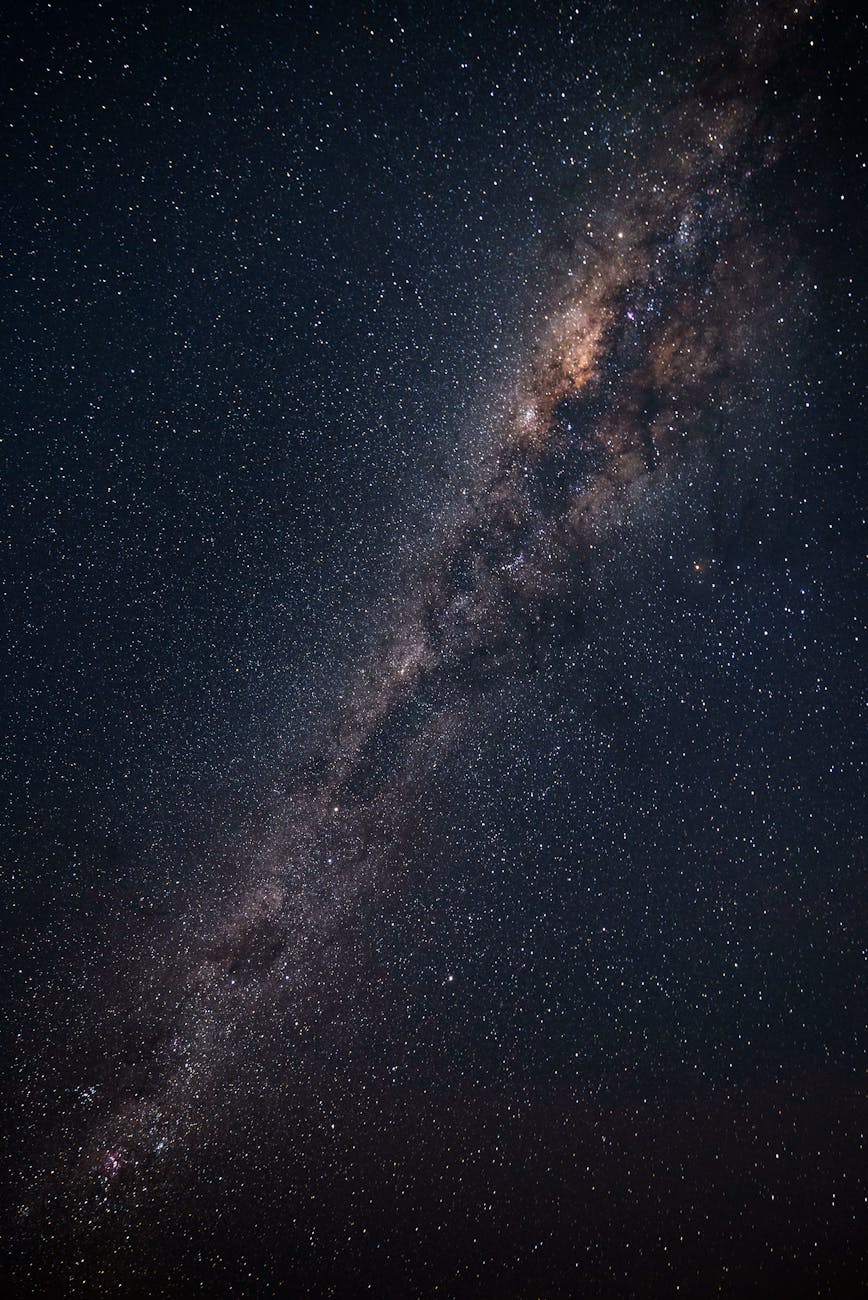Superfact 14: The vastness of space and the beginning of infinity
The Universe is unimaginably large. Our solar system is enormous. It consists of our star, the sun, the planets including earth, dwarf planets, asteroids, comets, rocks, the Kuiper belt, the Oort cloud, and much else. It is 100,000 times wider than the distance between the sun and our earth. Yet it is just one star system among between 100 and 400 billion in our galaxy, the Milky Way.
But that is not all. According to the Nobel Prize winner in physics, Roger Penrose, our universe is just one in an eternal (infinite) series of universes, an eternal chain of Big Bangs that has always existed. See his conformal cyclic cosmology (CCC) model (and the book cycles of time).
According to Stephen Hawking, M-theory, an extension or collection of string theories, states that there are 10^500 or 10000000000000…(followed by five hundred zeros) possible multi-verses that are all equally possible. Hugh Everett’s multiverse or multi-world theory states that there are infinitely many universes.
Now try to imagine the size of it all. You can’t do that, can you?

About The Universe
When the astrophysicist Brian Cox was asked the question “what is the one fact about the Universe that blows your mind the most?”, he answered, “One. Just the size and scale of it…”.
At first, I thought his answer was a bit boring. I mean, what about neutron stars, which essentially are giant atomic nuclei? What about the amazing mysteries surrounding black holes, and what about supermassive black holes, quasars, magnetars, the great attractor, what about the big bang, quantum physics, massless particles, the amazing general theory of relativity, dark energy, etc.
Then I tried to imagine the size and scale of the universe and I realized that he knew what he was talking about. The more you think about it, the more it blows your mind.

The vastness of space and the beginning of infinity
Below is a 55 second video in which astrophysicist Brian Cox ruminates on what it means to live a finite fragile life in an infinite eternal Universe.
Our sun is a star. The sun’s diameter is 109 times larger than earth’s diameter, which means that you could fit more than one million earths inside the sun. The distance between the sun and the earth is called an astronomical unit or 1 AU. 1 AU is approximately 11.7 million times larger than earth’s diameter and 107,340 times larger than the sun’s diameter.
The solar system including all the planets, dwarf planets, asteroids, the Kuiper belt and the Oort cloud is 100,000 AU across with the sun just being a dust speck in the middle.
I mentioned that M-theory implies that there are at least 10^500 multiverses. To get an idea of how bif that number is; It is a quintillion times a quintillion times a quintillion times a quintillion times a quintillion times a quintillion times a quintillion times a quintillion times a quintillion times a quintillion times a quintillion times a quintillion times a quintillion times a quintillion times a quintillion times a quintillion times a quintillion times a quintillion times a quintillion times a quintillion times a quintillion times a quintillion times a quintillion times a quintillion a quintillion times a quintillion times a quintillion times. By the way a quintillion is a million trillion.

Below are two more videos. The first one is trying to give a perspective on the size of our solar system, our galaxy, and the Universe. It is 11 minutes and 9 seconds long. The second one is very long, half an hour, and it is a bit advanced, so I recommend it only to star nerds.
However, at 22 minutes and a bit more than 30 seconds it states the observable universe is less than a 15 millionth of the universe (which might be even bigger) which contains at least 30 quintillion galaxies.


I wasn’t familiar with Brian Cox, and his presentation takes a bit of getting used to. But, I watched a chat he had with Joe Rogan–that was pretty interesting.
LikeLiked by 2 people
I’ve been following Brian Cox for a while and buying some of his books. I saw that chat he had with Joe Rogan as well. Thank you for stopping by Jacqui.
LikeLike
Love this, Thomas! You wrap it all so well, so informative and easy to follow. It’s indeed amazing! Reading your post made me feel like a speck in an infinite ocean and, at the same time, a precious miracle of Existence! It’s a wonderful feeling, is it not? It reveals the greatness of life—personally and universally (or better said, multiversely!). Thank you for making all this possible, my friend! Sending you light and blessings*
LikeLiked by 1 person
You are right. We are so extremely small and yet so extremely unique. Thank you for your insightful comment.
LikeLiked by 1 person
Whew, these are very big numbers, Thomas. I am glad I don’t have to try to say them in public. Thanks for another fascinating post.
LikeLiked by 1 person
Thank you so much for your kind words Robbie. About quintillion, I admit I looked that up. 18 zeros.
LikeLike
My goodness!
LikeLiked by 1 person
Yes we are infinitely a tiny spec in the scheme of things… Yet each spec is unique and has the ability as Brian cox often speaks of, for we are all a facet of the whole, like a diamond … And a molecule structure we affect other molecules around us… So as we move, the Universe moves… Like the breath… expanding and contracting…
Thank you for sharing x
LikeLiked by 1 person
Thank you so much Sue. That is a brilliant way of putting it.
LikeLiked by 1 person
Amazing to even think of such things. How they figure out all those numbers is beyond me. The weirdest part to me is just that we are riding around on a big ball that is floating in space. 🙂
LikeLiked by 1 person
Yes you are right. The numbers concerning our solar system and the observable universe are based on calculations but the multiverse numbers are essentially guesses. There might be some evidence for Roger Penrose’s conformal cyclic cosmology in the microwave background radiation, but as I understand everything else regarding multiverses is more or less speculation.
LikeLiked by 1 person
It shows how infinite and how we, being stardust, will always be part of the whole.
LikeLiked by 1 person
Those are wise words. Thank you festo_sanjo
LikeLiked by 1 person
The recent film The Vast of Night had a very appropriate name …
LikeLiked by 1 person
I had to look that up. It sounds like a movie I might love. It is funny I’ve never heard of it. I see they sell it on Amazon.
LikeLiked by 1 person
I saw it, it was really good!
LikeLiked by 1 person
Have you ever heard of infinite regression? That’s an objection to an infinite past.
What caused the Big Bang? What caused the cause of the Big Bang? And what caused the cause of the cause of the Big Bang? And so on.
But theories and speculations are out of the scope for this blog. Only super facts are in the scope of this blog.
LikeLiked by 1 person
With respect to what I call super facts, you are right. Scientific theories are not super facts, not because they are not correct, but because they are frame works, models, explanations for facts, rather than a singular fact. Also, speculation cannot be a super fact, since I require super facts to be accepted as true (or very likely to be true) by scientists/experts/. However, only about half of my posts are super fact posts. I have posted book reviews and other fact related topics. I’ve read a book by Nobel price winner Roger Penrose called Cycles of Time where he presents his Conformal Cyclic Cosmology, a theory in which an infinite number of Big Bangs are happening subsequently and eternally, but not via expnasion and contraction, but rather extreme or infinite expansion eventually becoming the next Big Bang. As for now that is speculation, but he claims we can see evidence for it in the cosmic background microwave radiation. I could always write a book review without calling it a super fact post.
LikeLike